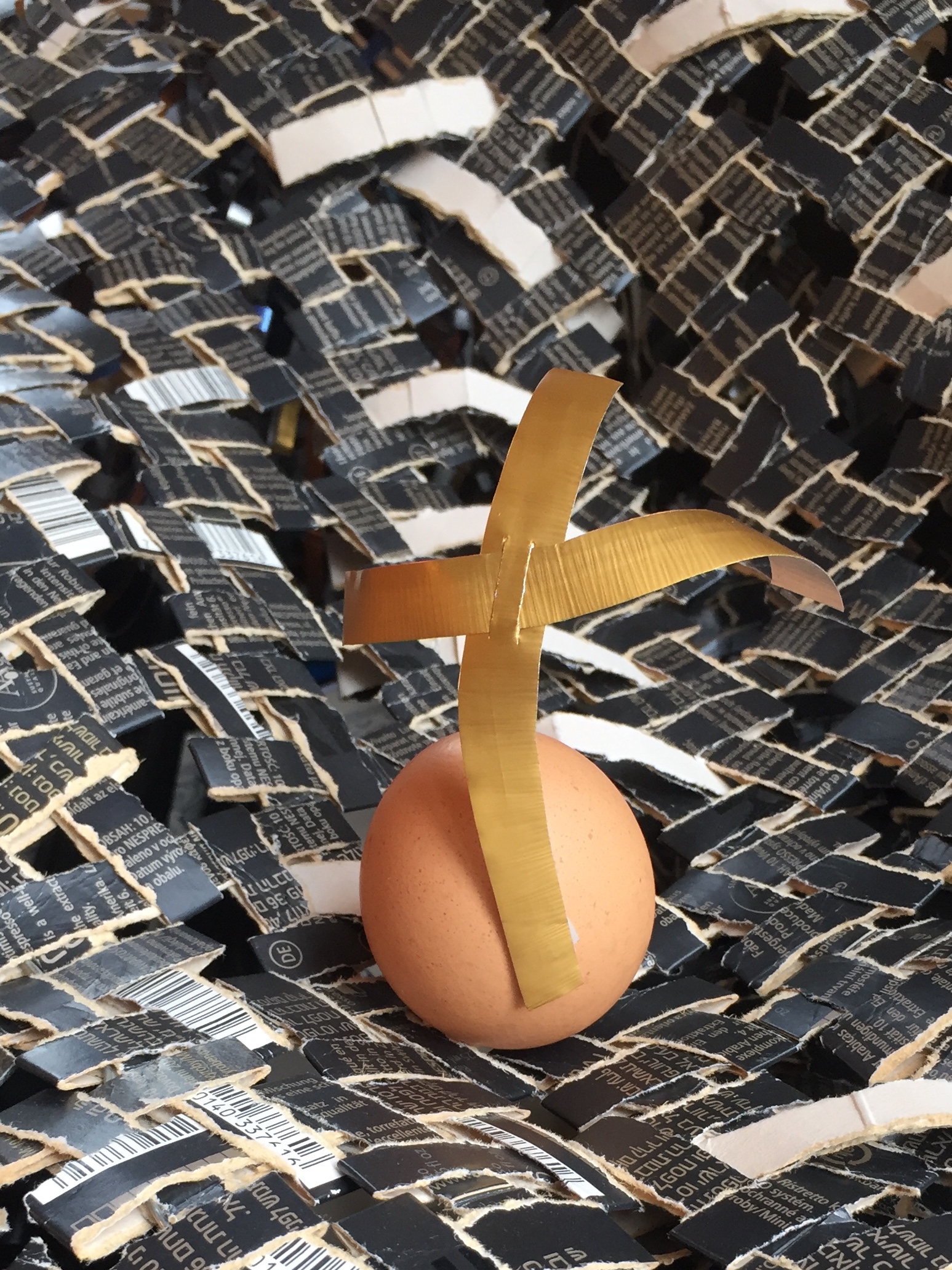Easter Breath
by Alicia B.
Mokap’s Easter Breath speaks of a the promise of new life and renewal; evoking not only the physical but also the spiritual transformation.
Rising from a wave of woven refuse, an egg-like vessel is flagged with a cross.
The delicate sphere containing a world of possibilities moves through space, a-sea on a strong mesh of black and white techno cardboard trash. Its sail, a cross, is gestural and graceful as it captures the air – or breath that is essential to life. It is made of wood shavings – like those discarded on the carpenter’s floor-similar to paper, a delicate product made from a strong tree. (This particular element reminds me of the hand-held crosses that we fashioned from palms for children on Palm Sunday and Norwegian Christmas angels.) The warm, subtle, honeyed hue and the organic shapes of these two objects are in stark contrast to the black and white angular grid on which they balance.
The work symbolizes the fragility and strength of the physical; the eventual decay of our natural world; cycles of life; resilience; and the belief of Christ’s ultimate victory over death.
Easter Breath illustrates the overall point of view one finds in Mokap’s work – that ugliness and refuse is transformed into beauty and worth. We see this time and again as Mokap chooses to make something meaningful out of material that would normally be discarded to fester in a landfill – but never quite leave us. Time, the temporal and the permanent is at play here. Rather than relegate the physical material to a holding pattern that will endanger our very existence, Mokap elevates the overlooked garbage to a precious status – think of her jewelry made of Nescafe’s plastic coffee pods. The theme of redemption threads through all of her work as she weaves a narrative that is hopeful, tentative and absolute at the same time. One that warns as it inspires; an Easter basket for 2021.

